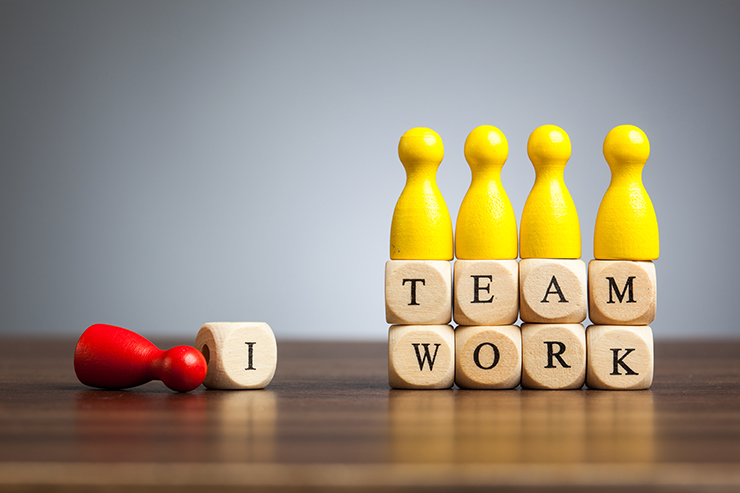
Image Credit: Shutterstock
Complementary. It is an interesting word that encompasses the idea of combining different elements into one complete, cohesive, and comprehensive package.
In music, it is discordant sounds played together in such a way as to create harmony. In science, it is elements combined to create a unique and distinct new element.
And in the workplace, it brings together people with diverse strengths, skills, talents, experiences, and backgrounds, creating a team that works together as one.
Do you have a complementary team?
Is your team working in harmony or discord?
Do they treat each other with respect, expressing praise and thanks for a job well done? Or are you constantly dealing with grumblings and complaints from team members about others on the team?
Is your team generating new ideas and carrying them through to completion or dropping balls and getting stalled?
Are they generating ideas with no real results; or, conversely, getting stalled at the analysis stage? Interestingly, either approach generates the same outcome: no results.
Is your team working together as one or as individuals seeking to protect their respective “territories”?
Do they willingly pool their ideas, time, talents, and resources, doing whatever it takes to get the job done? Are they complementing each other or competing with each other?
Discord, lack of results, and the silo effect are all signs of a dysfunctional team. The good news is, you, as the leader, can turn it around.
How can you develop a complementary team?
1. Know Your People
As a leader, you must know your people – their strengths, weaknesses, motivators, and values. This helps you place them in areas and give them assignments that fit their unique strengths and skills. When someone is doing meaningful work they truly enjoy, you will seldom have an issue with them or their work. But if you place someone in a situation or environment that does not fit them, you will begin to see discord, lack of results, and the silo effect.
In addition, leaders who take the time to help team members learn each other’s strengths and style have teams who begin to recognize the diversity and value of each person’s area of expertise.
If you put these two factors together – a person who loves their work and a team who appreciates their expertise – you have an unstoppable force. Replicated across every member of your team, the sky is the limit on what you can do together.
2. Communicate with your people.
Very often, a team problem is, at is core, a communication problem. Great leaders recognize the value of open communication with their team, and they also instill open communication across the team as well. The Maxwell Method of Communication Impact Report provides some great guidelines for communicating with different personalities in ways that will resonate with each.
3. Set your people up for success.
Recognize that not everyone is the same. In fact, everyone on your team should NOT be the same. Knowing this helps you create team dynamics that will set your team members up for success.
Take, for instance, a D-wired team member. They are direct, to the point, and all about action. They will find a way to get things done swiftly, no matter the challenge.
But details and unfinished tasks are a source of great stress and annoyance to them.
This is your opportunity to set them up for success.
- Assign an S-wired team member to keep things moving in an organized and efficient fashion.
- Assign a C-wired team member to add the depth of detail and quality needed to ensure the job is not only done but done right.
- Assign an I-wired person to market and sell the ideas and products initiated by the D-wired person. This feeds back into the one thing most important to a D-wired person – results.
In creating this type of complementary cycle of success, you have not only created results, you have also developed a team of diversified individuals who have learned to work together as one.
—-
For more resources on how you can create a complementary team, click here to learn about the Maxwell Method of Communication Impact Report.
As the CEO of Strength Leader Development, Deb Ingino is a highly sought-after international executive mentor, coach, trainer and speaker. Deb is well versed in global business operations and helps business leaders and their teams to discover and leverage their strengths, so they can create highly collaborative teams that deliver great results. With a refreshingly direct style, Deb helps leaders and their teams to deliver profitable results. Connect with Deb to learn more about her mentorship and coaching programs to equip you with advanced strategies to elevate your results.
+ view comments . . .